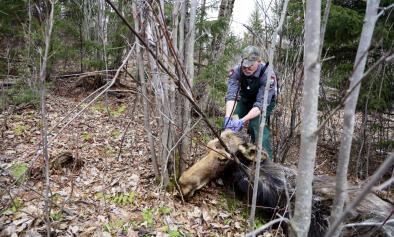Science Source
Cross-scale Drivers of Natural Disturbances Prone to Anthropogenic Amplification: The Dynamics of Bark Beetle Eruptions
- States that biome-scale disturbances by eruptive herbivores provide valuable insights into species interactions, ecosystem function, and impacts of global change
- Presents a conceptual framework using one system as a model, emphasizing interactions across levels of biological hierarchy and spatiotemporal scales
- Looks at bark beetles, which are major natural disturbance agents in western North American forests
- States that recent bark beetle population eruptions have exceeded the frequencies, impacts, and ranges documented during the previous 125 years
- States that extensive host abundance and susceptibility, concentrated beetle density, favorable weather, optimal symbiotic associations, and escape from natural enemies must occur jointly for beetles to surpass a series of thresholds and exert widespread disturbance
- States that eruptions occur when key thresholds are surpassed, prior constraints cease to exert influence, and positive feedbacks amplify across scales
- States that climate change and reduced habitat heterogeneity increase the likelihood that key thresholds will be exceeded, and may cause fundamental regime shifts
- Concludes that systems in which endogenous feedbacks can dominate after external forces foster the initial breach of thresholds appear particularly sensitive to anthropogenic perturbations
Related Content
Science Source
| Global Change Biology
Decadal-scale phenology and seasonal climate drivers of migratory baleen whales in a rapidly warming marine ecosystem
Daniel E. Pendleton, Morgan W. Tingley, Laura C. Ganley et al
Headline

May 19, 2022 | Climate Nexus Hot News
Climate Change Great For Winter Ticks, Very Bad For Moose Calves
Science Source
Climate change increases cross-species viral transmission risk
Colin J. Carlson, Gregory F. Albery, Cory Merow et al
Science Source
| Journal of Animal Ecology
Climate change affects bird nesting phenology: Comparing contemporary field and historical museum nesting records
John M. Bates, Mason Fidino, Laurel Nowak-Boyd et al


